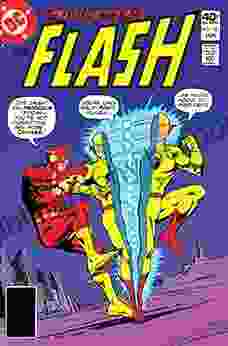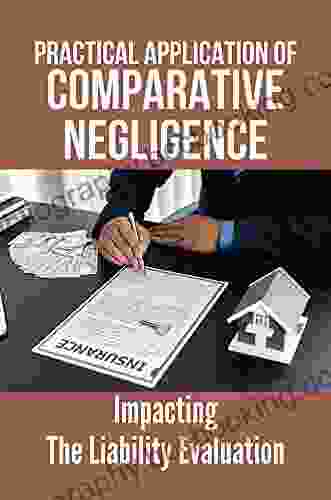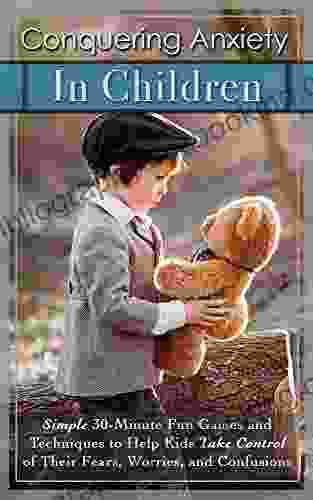Observation and Experiment: A Comprehensive Guide to Causal Inference

Causal inference is a fundamental aspect of scientific research, enabling us to understand the cause-and-effect relationships between variables. The book 'Observation and Experiment: An to Causal Inference' provides a comprehensive exploration of this field, offering a deep dive into its principles, methods, and applications. This article will guide you through the key concepts and insights presented in the book, empowering you to make informed decisions in your own research endeavors.
Understanding Causal Inference
Causal inference aims to establish the causal effect of one variable (the cause) on another variable (the effect). However, determining causality can be challenging due to the presence of confounding variables - other factors that may influence both the cause and effect, potentially biasing the results. The book addresses this challenge by discussing various methods to control for confounding variables.
4.3 out of 5
| Language | : | English |
| File size | : | 8330 KB |
| Text-to-Speech | : | Enabled |
| Screen Reader | : | Supported |
| Enhanced typesetting | : | Enabled |
| Word Wise | : | Enabled |
| Print length | : | 382 pages |
One common approach is randomization, employed in randomized controlled trials (RCTs). RCTs randomly assign participants to different treatment groups, ensuring that the distribution of confounding variables is similar across groups. This helps to isolate the causal effect of the treatment by minimizing the influence of other factors.
Observational Studies and Propensity Score Matching
Observational studies, where researchers observe existing data rather than manipulating variables, pose additional challenges for causal inference. Confounding variables can still bias the results, but researchers can employ statistical methods to adjust for their effects.
Propensity score matching is a technique used in observational studies to create a comparison group that is similar to the treatment group in terms of their propensity to receive the treatment. By matching individuals based on their propensity scores, researchers can reduce bias and improve the accuracy of their causal estimates.
Advanced Methods for Causal Inference
The book also delves into advanced methods for causal inference, such as instrumental variables and regression discontinuity design. These methods provide additional tools to address confounding and strengthen causal claims, particularly in situations where RCTs or propensity score matching may not be feasible.
Instrumental variables use a third variable that is correlated with the treatment but not with the outcome, except through its effect on the treatment. By using this instrumental variable, researchers can isolate the causal effect of the treatment.
Regression discontinuity design leverages a sharp discontinuity in the treatment assignment rule to estimate causal effects. This method is applicable when the assignment to treatment is based on a continuous variable that is close to a threshold, creating a natural experiment.
Applications of Causal Inference
Causal inference has broad applications across various scientific disciplines, including medicine, social sciences, and economics. By understanding causal relationships, researchers can make informed decisions, design effective interventions, and develop policies that have a meaningful impact.
For instance, in medicine, causal inference helps identify the effectiveness of treatments and interventions. In social sciences, it enables researchers to understand the causes of social phenomena and develop policies to address societal issues. In economics, causal inference aids in evaluating the impact of economic policies and forecasting economic outcomes.
'Observation and Experiment: An to Causal Inference' is an invaluable resource for researchers, students, and practitioners seeking to enhance their understanding of causal inference. The book provides a comprehensive overview of the principles, methods, and applications of this field, empowering readers to conduct rigorous and informative research.
By mastering the concepts of causal inference, researchers can uncover the true relationships between variables, make informed decisions, and contribute to advancements in their respective fields. This book serves as a foundational guide for anyone seeking to navigate the complexities of causal inference and make meaningful contributions to scientific knowledge.
4.3 out of 5
| Language | : | English |
| File size | : | 8330 KB |
| Text-to-Speech | : | Enabled |
| Screen Reader | : | Supported |
| Enhanced typesetting | : | Enabled |
| Word Wise | : | Enabled |
| Print length | : | 382 pages |
Do you want to contribute by writing guest posts on this blog?
Please contact us and send us a resume of previous articles that you have written.
 Book
Book Novel
Novel Page
Page Chapter
Chapter Text
Text Story
Story Genre
Genre Reader
Reader Library
Library Paperback
Paperback E-book
E-book Magazine
Magazine Newspaper
Newspaper Paragraph
Paragraph Sentence
Sentence Bookmark
Bookmark Shelf
Shelf Glossary
Glossary Bibliography
Bibliography Foreword
Foreword Preface
Preface Synopsis
Synopsis Annotation
Annotation Footnote
Footnote Manuscript
Manuscript Scroll
Scroll Codex
Codex Tome
Tome Bestseller
Bestseller Classics
Classics Library card
Library card Narrative
Narrative Biography
Biography Autobiography
Autobiography Memoir
Memoir Reference
Reference Encyclopedia
Encyclopedia Igor Dudukchan
Igor Dudukchan Ibi Zoboi
Ibi Zoboi J H Shapiro
J H Shapiro Iain Stewart
Iain Stewart J David Stein
J David Stein Mike Mattesi
Mike Mattesi Iain Rob Wright
Iain Rob Wright Remo Guerrini
Remo Guerrini Ilene Cooper
Ilene Cooper Vanja Hamzic
Vanja Hamzic J K Gibson Graham
J K Gibson Graham Sir David Tang
Sir David Tang William G Crook
William G Crook Terry Bennett
Terry Bennett Peter David
Peter David Micha Archer
Micha Archer Victoria D Kraft
Victoria D Kraft John D Kelleher
John D Kelleher Jack Gernsheimer
Jack Gernsheimer Irfan Ahmad
Irfan Ahmad
Light bulbAdvertise smarter! Our strategic ad space ensures maximum exposure. Reserve your spot today!
 Charles BukowskiFollow ·15.3k
Charles BukowskiFollow ·15.3k Douglas FosterFollow ·17.9k
Douglas FosterFollow ·17.9k Victor TurnerFollow ·14.4k
Victor TurnerFollow ·14.4k Natsume SōsekiFollow ·19.7k
Natsume SōsekiFollow ·19.7k John MiltonFollow ·17.5k
John MiltonFollow ·17.5k Jett PowellFollow ·14.1k
Jett PowellFollow ·14.1k Wesley ReedFollow ·9k
Wesley ReedFollow ·9k Caleb CarterFollow ·18k
Caleb CarterFollow ·18k

 Luke Blair
Luke Blair101 Amazing Facts About Australia: A Journey Through the...
A Literary Expedition Unveiling the Treasures...

 Harry Hayes
Harry HayesWitness the Velocity and Legacy of the Scarlet Speedster:...
Delve into the Lightning-Charged...

 Stan Ward
Stan Ward101 Amazing Facts About Ancient Egypt: Unraveling the...
: A Timeless Realm of Wonder Ancient Egypt, a...

 Stephen King
Stephen KingEscape into Adventure: Unveil the Secrets of Adventure...
In the annals of comic book history,...

 Forrest Blair
Forrest BlairThe Oxford Dog Training Company Presents: A Holistic...
In the realm of dog...
4.3 out of 5
| Language | : | English |
| File size | : | 8330 KB |
| Text-to-Speech | : | Enabled |
| Screen Reader | : | Supported |
| Enhanced typesetting | : | Enabled |
| Word Wise | : | Enabled |
| Print length | : | 382 pages |














